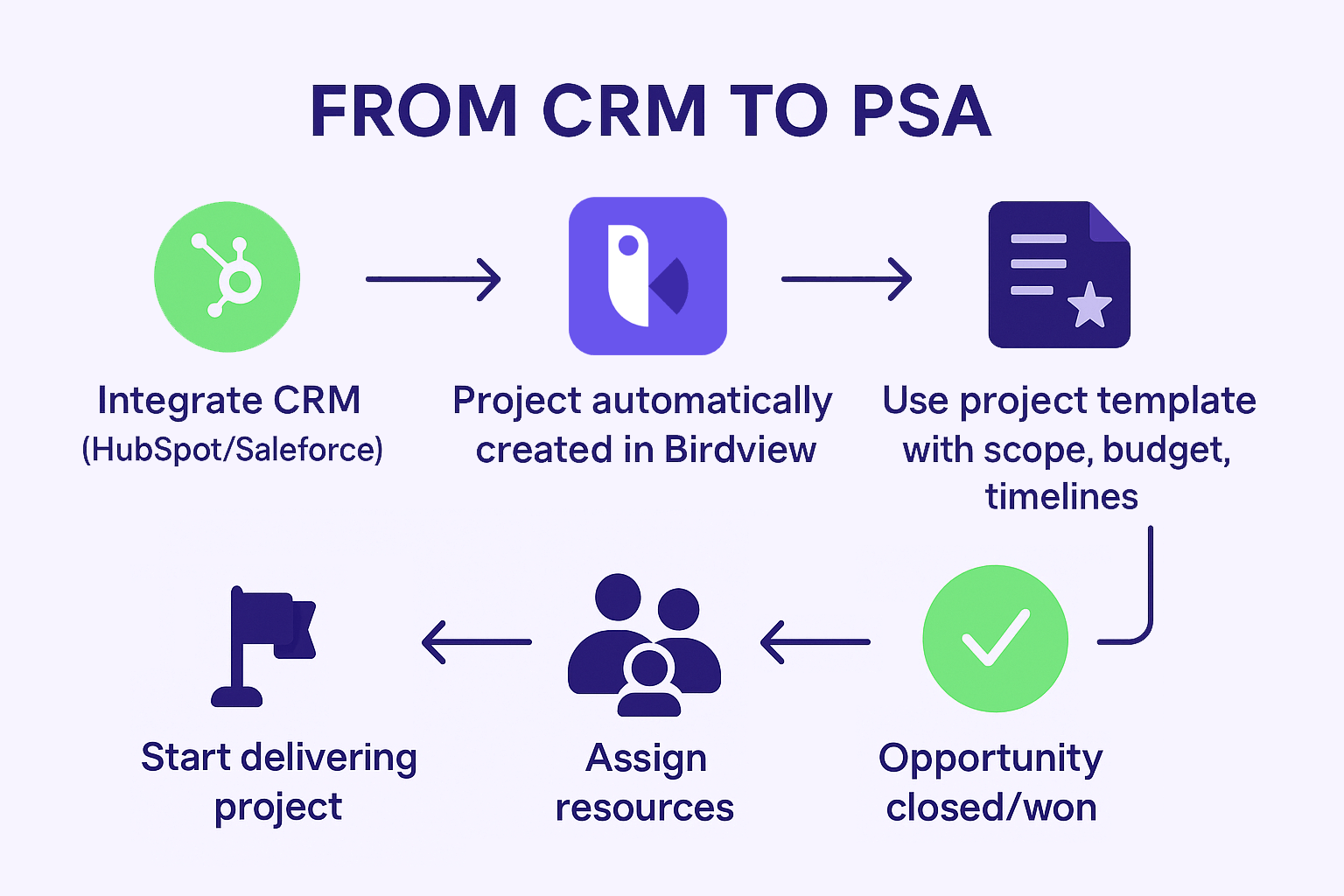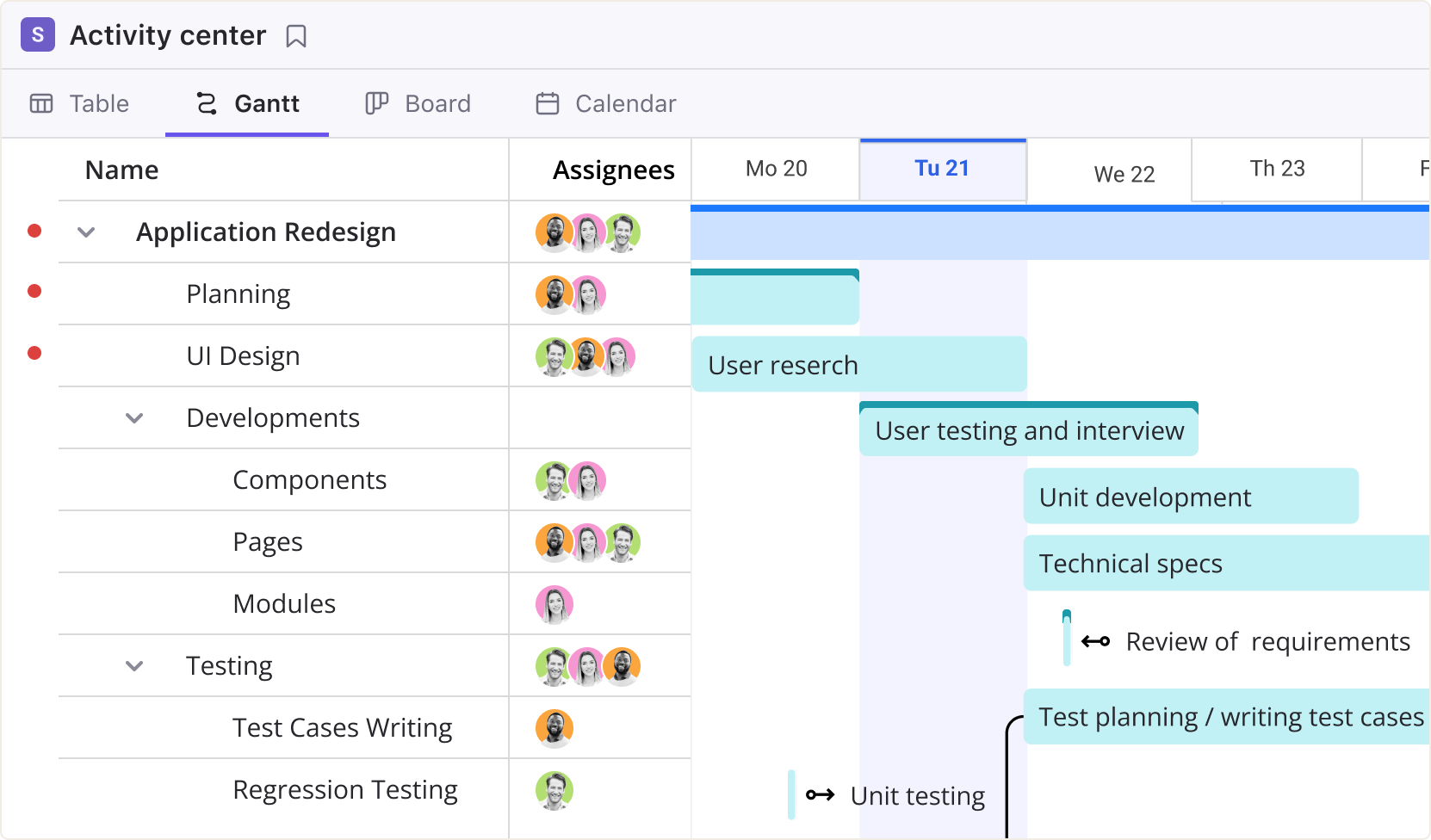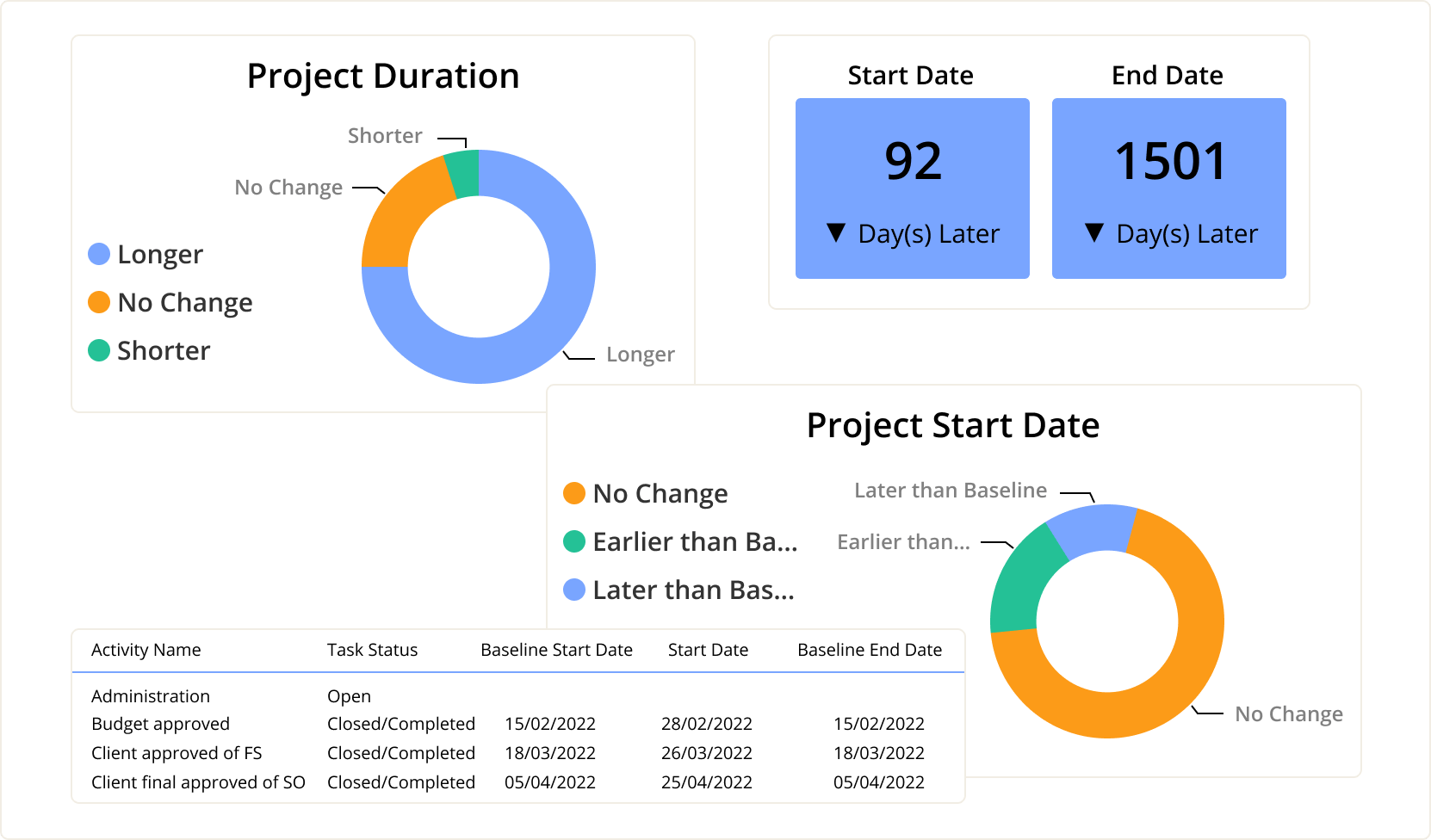Every successful project starts with a clear process. That process is called the project management life cycle–a step-by-step framework that helps teams move from an idea to a finished result.
Whether you’re launching a new product, delivering a service, or redesigning a website, every project follows a journey. The project life cycle breaks that journey into manageable stages, making it easier to plan, organize, and get the work done smoothly. No matter how different projects may look on the surface, this structure gives you a reliable way to stay on track, work better as a team, and avoid last-minute surprises.
In this guide, we‘ll walk you through each phase in plain language, with practical examples and helpful tips. Whether you run projects every day or just need to stay organized while working with clients or teams, understanding the project life cycle will make your work easier–and your results stronger.
In this article
What is the project life cycle?
The project management life cycle is just a step-by-step process that helps you take a project from start to finish. Most projects go through five main phases: Initiation, Planning, Execution, Monitoring and Control, and Closure.
Each phase has a different focus–like figuring out what needs to be done, making a plan, doing the work, keeping things on track, and finally wrapping it all up. Together, these steps give teams a clear path to follow so that nothing gets missed and everyone stays on the same page.
Think of it like building a house. You wouldn‘t start pouring the foundation without knowing what kind of house you‘re building, who it‘s for, or what it should look like in the end. The project life cycle makes sure you ask the right questions early on–and keep checking in as the project moves forward.
Who manages the project life cycle?
Managing the project life cycle isn‘t just one person‘s job.
But there‘s usually someone leading the charge.
That person is often the project manager.
Depending on the organization, it could also be a team lead, an account manager, or even the company founder.
Their role is to coordinate the planning, assign tasks, monitor progress, and keep stakeholders informed.
They make sure the team stays aligned with goals, timelines, and budgets.
But project management is rarely a solo act. Other roles are involved at each stage:
-
Stakeholders help define the project‘s goals and approve key deliverables.
-
Team members contribute their skills to complete tasks and share updates.
-
Clients (in service-based businesses) often provide feedback, clarify needs, and approve work as it progresses.
In larger companies or complex projects, you may also have resource managers who allocate people across different projects, business analysts who define requirements, or PMOs (Project Management Offices) that create standards and provide oversight.
In smaller teams, one person may wear multiple hats.
For example, a freelancer might manage the client, do the work, track progress, and send the invoice–all on their own.
No matter the team size, one principle holds true: someone must own the process. When that ownership is clear, projects run more smoothly, problems get resolved faster, and the team feels more confident in their direction.
And while software like Birdview PSA can automate updates, simplify resource planning, and centralize communication, the people behind the process still matter most. Good tools amplify good leadership–but they don‘t replace it.
The 5 phases of the project life cycle: From idea to delivery
The project life cycle serves as the backbone of project management, offering a structured approach to guide projects from initiation to completion. Comprising distinct phases, each with its unique characteristics and deliverables, the project life cycle provides a roadmap for successful project execution.
Tools like Birdview PSA help simplify the entire process–especially when you‘re managing multiple projects or clients at once.
Read more: Automate your professional services project lifecycle
1. Project initiation phase: The genesis of project success
Initiation sets the foundation. This is where a project begins–not with a task list, but with a conversation. The project manager, client, and key stakeholders meet to explore the “what,” “why,” and “how” behind the work. What is the problem or opportunity? Why does it matter now? And what is the organization prepared to invest to make it happen?
In this phase, the focus is on defining the project‘s purpose, objectives, scope, and success criteria. It‘s also when you evaluate feasibility, identify initial risks, and form the core team. Think of it as getting everyone on the same page before any work begins.
For example, a consulting firm might be approached by a client who wants to improve their internal reporting processes. During initiation, the project manager would gather key requirements, assess existing systems, and confirm whether the desired outcome is achievable within budget and timeline constraints.
By the end of this phase, stakeholders should clearly understand the value of the project and whether it‘s realistic to move forward.
Read more: Seamless handoff from sales to implementation
Project Intake and Prioritization Process
When a new project request is received, the Project management office (PMO) and/or Project Managers review it against all current and planned projects. Both potential client and internal initiatives are prioritized and ranked based on a set of specific evaluation criteria. The Project Manager prepares a preliminary project plan that includes an estimated budget and timeline by using a template from a similar opportunity in the past. The plan will contain soft scheduling and resource allocation estimates.
The project intake process can be fully automated by utilizing custom forms, built-in templates, or integrating project management software like Birdview PSA with CRM.

Read more: Fast and accurate project estimation
2. Project planning phase: Turning ideas into a workable roadmap
Once a project has been approved during the intake phase, the next step is planning. Depending on the company or team‘s work process, this could either mean conducting a pre-project planning meeting or involve the PM drawing up a work plan by himself. This is where high-level ideas get translated into a clear, coordinated roadmap that guides the team‘s actions throughout the project.
Planning is often seen as the most detailed and demanding phase–and for good reason. It‘s where the project manager and team break down the work into tasks, map out timelines, allocate resources, define roles, and prepare for potential risks. A well-thought-out plan helps avoid confusion later and provides a shared understanding of how the project will unfold.
Project Plan (WBS), Resource Schedule and Budget Baseline
The Project Manager creates a detailed project work breakdown structure (WBS) either from scratch or with a template. Resource selection is finalized, then tasks are assigned and scheduled. The baseline of the project schedule and budget is captured to enable actual versus planned analysis in the future.
The outcome is a comprehensive project plan that guides the project from start to finish. Successful planning ensures efficient use of resources and helps manage potential risks.
In most professional services firms, planning also includes resource scheduling. Who‘s available to work on this? Will taking on this project stretch the team too thin? Platforms like Birdview PSA help project managers visualize team capacity and assign work based on availability and skills. This not only improves accuracy, but also helps prevent burnout by balancing workloads.
Risk planning is another key element. What could go wrong, and how will you respond? Maybe the client has a history of delayed approvals, or a critical team member has planned time off. Listing these risks early and building in contingency time can make the difference between a smooth delivery and a last-minute scramble.
A useful practice at this stage is to build a baseline plan–one that locks in the approved budget, timeline, and scope. This gives you a reference point to measure against later in the project. If changes come up (and they usually do), having a baseline helps you explain deviations clearly and manage expectations.
In short, the planning phase transforms big-picture goals into a practical path forward. It‘s where strategy meets structure–and the more thoughtfully you approach it, the smoother execution tends to be.

Related posts:
Fast and accurate project estimation
Resource Matching Process for Balanced Workload
3. Project execution phase: Putting the plan into action
If the first two phases went right, then the problems in this phase should be pretty minimal. Of course, there are always hiccups. Underperforming team members and persistent bugs are a nasty thorn in the side, but the real test of a PM‘s patience is the client. The development cycle is, by nature, the longest phase of the project. The client will have plenty of time to rethink their requirements and come up with “something better” that the Project Manager could “squeeze in”.
This, my friends, is where the Scope of Work comes into play. Make sure the client knows that changes outside the A statement of work come at a price–both in money and time.
Along with phase 2, this phase is the most complex and dynamic and requires a lot of personal dedication and physical strain from the management. This is why it is more than sound to have an aid in the form of a project management software tool. It not only allows you to organize your work better but offers unlimited analytical and reporting capabilities that save you a lot of time and money. Automatic project health and critical path calculation, timesheet tracking, interactive Gantt charts, all these are just a figment of what today‘s project management tools can do. And the best part is that most of them are web-based thus giving you a chance to enjoy access to your projects from anywhere in the world.
4. Monitoring and control: Staying on track
Monitoring and control happen alongside execution–and they‘re just as important. Even if testing and quality checks were done earlier, it‘s always worth running through everything once more before launch. Just to be sure.
As the project moves forward, the project manager keeps a close eye on progress, budget, and scope. This includes tracking whether tasks are on schedule, whether resources are being used effectively, and whether the project is heading toward its intended goals. If something starts to drift, they can step in early–before small issues become big delays.
In larger teams, the PMO and leadership rely on dashboards and reports to monitor financials, productivity, and key performance indicators. These tools give them a live snapshot of how the project is performing, so decisions can be made quickly and based on real data.
Having the right software makes all of this a lot easier. Project management platforms like Birdview PSA provide built-in dashboards, alerts, and tracking tools that help you stay on top of what matters–without constantly chasing updates.
Because it‘s cloud-based, Birdview gives your whole team 24/7 access to schedules, tasks, and reports, from anywhere. And with responsive customer support, you‘re never left alone when things get tricky.
In short: good monitoring means fewer surprises. And with the right tools in place, staying on track becomes far less stressful.

5. Project closing phase: Portfolio Optimization, Project KPIs, Lessons Learned.
The closing phase is the end of the project life cycle. In this phase, project managers check that all project deliverables are done, stakeholders approve the outcomes, and the project achieves its goals. A thorough project review happens to see what went well, find ways to improve, and learn lessons for future projects. Closing activities involve releasing project resources, creating final reports, and celebrating team successes.
After completing the project, the Project Manager and/or PMO conduct a post-mortem, document lessons learned, and share them with the Sales and Executive Teams. This information is valuable for future project assessments, planning, and portfolio optimization.
Service vs. internal projects: Life cycle differences
While both follow the same core stages–initiation, planning, execution, monitoring, and closure–the project life cycle can look quite different depending on whether you‘re delivering a service to a client or managing an internal initiative. Service projects usually involve external stakeholders, strict deadlines, and clearly defined deliverables tied to contracts. Communication, approvals, and expectations need to be carefully managed, often with formal checkpoints. Internal projects, on the other hand, tend to have more flexibility. Teams may adjust timelines more freely, prioritize cross-department collaboration, and focus more on process improvements or internal value. The key difference lies in the level of external pressure and visibility: service projects must hit client targets, while internal ones serve strategic or operational goals.
Client vs. internal projects: Key life cycle differences
| Aspect | Service (Client) Projects | Internal Projects |
|---|---|---|
| Stakeholders | External clients, often with formal contracts | Internal teams and departments |
| Scope definition | Clearly defined, often fixed by contract | Flexible, can evolve over time |
| Deadlines | Strict, tied to deliverables and client expectations | More flexible, adjustable based on internal priorities |
| Approvals | Formal sign-offs at key stages | Informal feedback or team consensus |
| Communication | Regular client updates, structured reports | Internal updates, often informal or asynchronous |
| Prioritization | High priority due to revenue impact | Lower priority, may be paused or delayed |
| Success metrics | Client satisfaction, on-time delivery, budget compliance | Process improvement, internal efficiency, strategic impact |
| Project tools needed | Full visibility, formal reporting, time tracking | Flexible tools, collaboration-friendly features |
| Project manager role | Acts as liaison, manages client expectations closely | Coordinates internally, often with cross-functional teams |
How Birdview PSA helps manage the project life cycle o simplify delivery
Managing a project from start to finish involves a lot of moving parts–planning, tracking, coordinating, and adjusting along the way. Birdview PSA helps simplify that process by giving teams a single platform to manage every phase of the project life cycle, from intake to closure.
Instead of juggling spreadsheets, emails, and separate tools, teams can use Birdview to centralize everything–tasks, timelines, resources, and budgets. During initiation, it helps prioritize project requests and build quick preliminary plans. In the planning phase, it offers visual tools like Gantt charts and real-time resource availability to build realistic schedules and avoid overload.
As work begins, Birdview becomes a shared workspace where the team can update progress, log time, and collaborate. Project managers get real-time visibility into how things are going and can adjust plans as needed–without waiting for manual reports. During monitoring and control, dashboards and alerts help spot issues early, so you can stay ahead of delays or budget problems. And when the project wraps up, Birdview supports smooth closure with checklists, feedback collection, and performance summaries.
What makes Birdview PSA stand out is how it keeps the whole project life cycle connected–from the first request to the final invoice. It‘s not just about managing tasks–it‘s about managing the bigger picture with clarity, control, and confidence.
You may be interested in...
Client project management: 9 tips and tricks to follow
The Expert’s Guide to Resource Planning in 2025
Resource Management: Process, Tips, & Real-Life Examples
Comparing project management techniques: Agile vs. Waterfall
Frequently asked questions (FAQ) about the project life cycle
1. What is the project management life cycle in simple terms?
It‘s a step-by-step process that helps teams take a project from idea to completion. It usually includes five stages: initiation, planning, execution, monitoring and control, and closure. Each stage helps keep the project organized and moving in the right direction.
2. Do all projects follow the same life cycle?
The core phases are usually the same, but how they‘re used can vary depending on the type of project. Client projects tend to follow a more formal structure, while internal projects might be more flexible. Agile teams may go through the phases faster or in cycles.
3. Who is responsible for managing the project life cycle?
Usually, a project manager leads the process, but they‘re not alone. Team members, stakeholders, and sometimes department leads or a PMO also play a part. The key is to have someone clearly in charge of moving the project through each stage.
4. What‘s the biggest mistake teams make during the project life cycle?
Skipping or rushing through the planning phase. Without a solid plan, it‘s easy to miss deadlines, overspend, or deliver something that doesn‘t meet expectations. Taking the time to plan properly sets the project up for success.
5. How can PSA software like Birdview help?
Birdview PSA helps manage each stage in one place–from intake forms and planning tools to execution dashboards and closure checklists. It keeps tasks, timelines, resources, and budgets all connected, so teams can work more efficiently and avoid things falling through the cracks.
6. Is the life cycle only for big projects?
Not at all. Even small projects benefit from having a clear structure. You can scale the process up or down depending on the size and complexity of the work.
7. Can I use the life cycle with Agile or hybrid methods?
Yes. The life cycle gives you a framework, but it doesn‘t force one specific method. Agile projects might go through these phases in sprints, while hybrid teams may blend traditional planning with flexible delivery.
8. How does the life cycle apply to client-facing work?
In client projects, the life cycle becomes more formal. Initiation includes proposals and discovery sessions. Planning involves detailed timelines and resource commitments. Execution must meet agreed-upon milestones. Monitoring includes regular status updates and reporting. Closure often means handovers, reviews, and final invoicing.
9. Who manages the life cycle in a consulting firm?
Usually, the project or engagement manager leads the life cycle. But resource managers, account managers, and even consultants themselves often support planning, delivery, and reporting. In larger firms, a PMO may set standards and oversee execution across teams.
10. What tools are useful for managing the consulting project life cycle?
Professional Services Automation (PSA) platforms like Birdview help connect everything in one place–project plans, time tracking, resource scheduling, budgeting, and client communication. That‘s especially useful when managing multiple client engagements at once.
The hassle-free option of SaaS management



